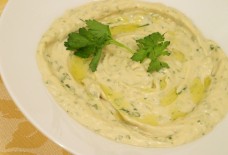A Utah writer's quest -- near and far -- for Moroccan pastilla
Casablanca, Morocco » Smile when you say pastilla.
Morocco, the exotic and ancient country on the northwest tip of Africa, is full of surprises for first-time visitors — and food is no exception.
It is known for couscous, as well as tagine – a delightful dish cooked in a clay casserole over coals. But my favorite Moroccan meal is pastilla (pas-tee-ah) — a pie historically filled with pigeon. These days, you’re more likely to find it stuffed with chicken and almonds or lamb. In coastal regions, it may be filled with seafood.
I hadn’t known of the dish before landing in Casablanca recently. The place made famous for Americans by the Humphrey Bogart flick is no longer a dusty little port. It is now a bustling metropolis of 7 million and is Morocco’s largest city, with traffic jams to prove it.
Downtown Casablanca is a modern place with tall white buildings — it reminded me of a gritty Buenos Aires sans the cleavage and tango. Wandering down by the waterfront, I stumbled upon a restaurant that featured pastilla. Curious, I ordered a seafood pie that set my endorphins to dancing.
As is the tradition with all Moroccan food, it is prepared with a symphony of spices but is not hot, like Thai or Indian cuisine. The indigenous Berbers have honed their spicing skills for centuries.
For some 3,000 years, the Berbers have lived here peacefully with a minority population of Jews. Historically, Berbers were pagan sheep- and goatherders and did not have written language. But somewhere around A.D. 700, Arabs arrived with Islam as well as a written language — Arabic.
According to Abdelkader Bourouti, the Moroccan chef at Salt Lake City’s Cedars of Lebanon Restaurant, the secret to pastilla is slow cooking the meat in a sauce with at least seven spices until it is tender and juicy. It is then wrapped in layers of phyllo dough and baked for about 20 minutes. It yields a meat pie in a light, flaky crust.
That is a simplistic explanation, of course. Every chef has secrets that bring magic to pastilla.
I’m no food critic, but I knew I was on to something. I determined right then to search out the best pastilla in Morocco.
—
Marrakech medina » The next day, I hopped the Marrakech Express to the famed trading outpost and oasis known for its medina (ancient walled city), where about one-fourth of the city’s population of 1 million still lives. Outside the walls of the medina, Marrakech is not so different than palm-lined San Diego, although all of its buildings are sandstone red. It’s gorgeous. Within a few steps, you can walk from 2015 to ancient times, where motor scooters give way to donkey carts.
Within the maze of the medina, I searched out a small restaurant and ordered pastilla and a Moroccan beer — Flag Speciale. Beer and wine were introduced to Morocco 100 years ago by the French, who had a presence here from 1908 to 1956. They departed without a militant struggle — unlike the case in Algeria. Today, most Moroccans also speak French.
Beer and wine are easy to find at tourist restaurants. But if you’re looking for a six-pack or a bottle, you’ll have to work for it — or get a guide.
Of course, finding anything within the rabbit-warren of alleys in the ancient Marrakech medina requires a lot of blind navigating and inquiry. But it paid off with a tantalizing chicken pastilla in a light crust. It cost about $10 or 100 dirhams — Moroccan currency. That is about half what I paid in the fancy seaside Casablanca restaurant — but that was a three-course meal.
Finding my way back to my riad — the Moroccan version of a B&B — required a guide until the third day, when I could finally get home by myself. But the people are very friendly and helpful. And staying in the medina really provides a flavor of the history here.
After several days in Marrakech, I took the first-class bus 2 ½ hours west to the tiny Atlantic port of Essouira, established by the Phoenicians 1,000 years ago. The Portuguese took over the port around 1500.
Today, it is nothing short of stunning and is reminiscent of the town from Bogart’s film. The docks are crowded with colorful fishing boats, and it has a beautiful long beach where you might spy a train of camels with kite surfers in the background gliding across breaking waves. Morocco is all about contrasts.
Source: www.sltrib.com



